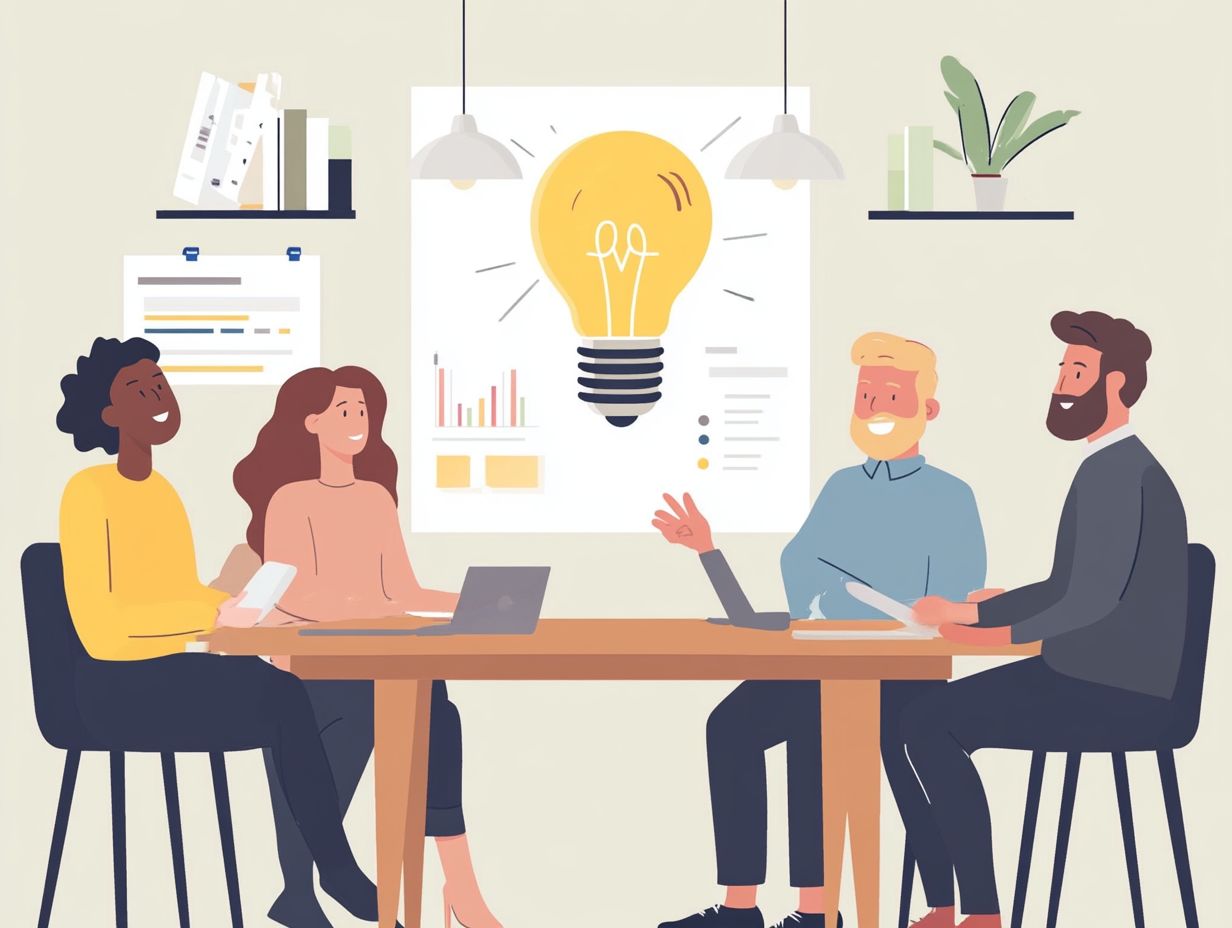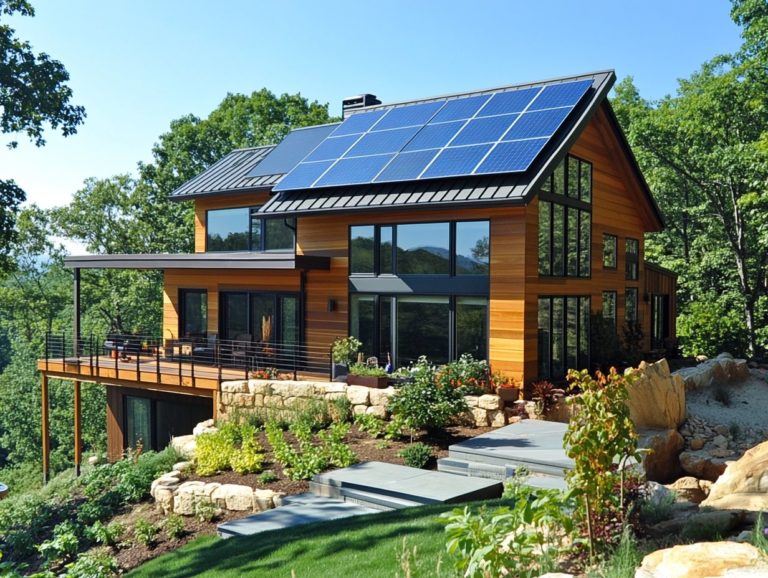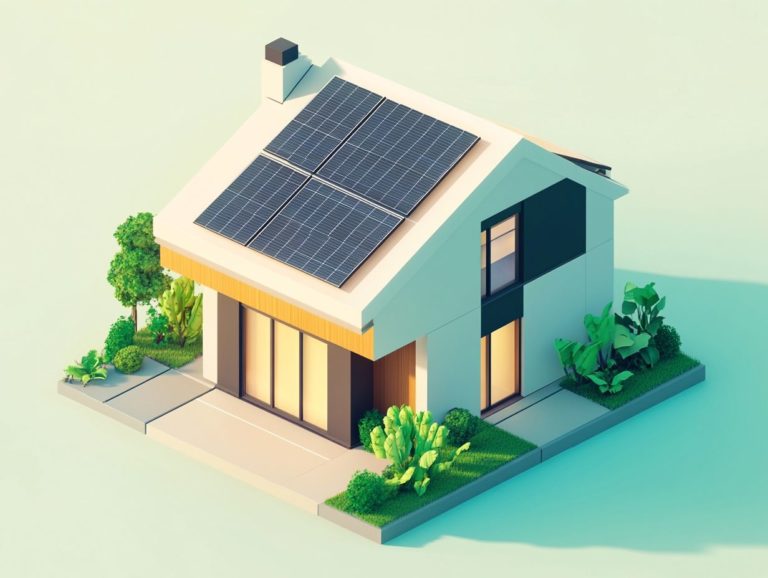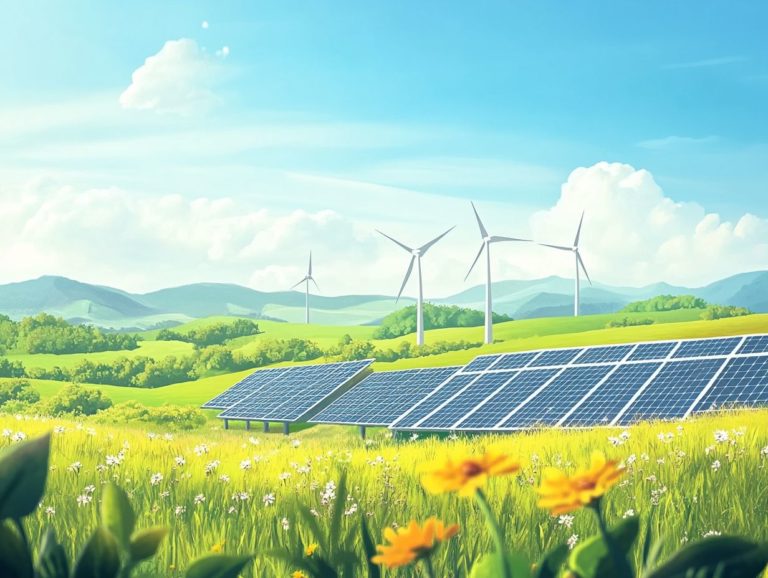How to Advocate for Energy Efficiency?
Energy efficiency is a cornerstone of a sustainable future. As you understand the complex world of energy consumption and its environmental impact, recognizing the barriers to effective advocacy is essential, especially in the context of climate action and the transition to renewable energy.
This article explores strategies that empower you to champion energy efficiency. These strategies include engaging stakeholders and sharing inspiring success stories related to clean energy initiatives. With a wealth of resources at your fingertips, you will be prepared to present a compelling case for energy-saving initiatives that can transform communities and safeguard our planet.
Discover the exciting possibilities and learn how you can become a powerful advocate for change!
Contents
- Key Takeaways:
- The Importance of Energy Efficiency
- Barriers to Energy Efficiency Advocacy
- Strategies for Effective Advocacy
- Advocacy Success Stories
- Resources for Advocates
- Frequently Asked Questions
- What is energy efficiency and why is it important to advocate for it?
- How can I advocate for energy efficiency in my community?
- Are there any government programs or incentives that support energy efficiency?
- What are some simple yet effective ways to promote energy efficiency?
- How can I get my workplace to become more energy efficient?
- What are some resources I can use to learn more about energy efficiency and how to advocate for it?
Key Takeaways:

- Educate yourself and others about the importance of energy efficiency and its impact on the environment.
- Identify the barriers and tackle them head-on!
- Engage with stakeholders and share success stories to build a strong case for energy efficiency and encourage action.
The Importance of Energy Efficiency
Energy efficiency plays an essential role in reducing energy consumption and greenhouse gas emissions.
By optimizing energy use in your home, business, or industry, you can significantly lessen your dependence on fossil fuels. This reduces carbon pollution and contributes to climate action.
Utilities and policymakers in the U.S. increasingly recognize energy efficiency as a clear way forward to cultivate a clean economy, reduce energy bills, and enhance energy security for everyone.
Investing in energy efficiency programs leads to substantial savings for you and encourages the adoption of renewable sources, which are crucial in tackling the climate crisis.
Understanding Energy Consumption and Environmental Impact
Understanding energy consumption and its environmental impact is vital for addressing the ongoing climate crisis. Energy production and usage contribute significantly to greenhouse gas emissions and the looming threat of climate catastrophe.
This reality prompts you to explore how various energy consumption patterns can either worsen or alleviate these ecological challenges. While fossil fuels have traditionally fueled global energy supply, accounting for roughly 80% of total consumption in recent years, their harmful effects on air quality and climate stability cannot be ignored.
In contrast, renewable energy sources like solar and wind offer cleaner alternatives. Recent statistics reveal that renewable energy technologies contributed nearly 30% of global electricity generation in 2020, signaling a significant shift in the energy landscape.
Innovations such as energy storage systems, which store energy for later use, and smart grids, which optimize energy distribution, are charting the course toward a more sustainable future. These developments enable efficient resource management and reduce reliance on carbon-intensive energy.
Barriers to Energy Efficiency Advocacy
Despite the critical importance of energy efficiency, you may encounter several barriers that hinder effective advocacy efforts. These include:
- High energy costs,
- Inadequate regulatory frameworks,
- and a notable lack of awareness regarding its benefits among both policymakers and the public.
Recognize these barriers to effective advocacy and learn how to overcome them.
Challenges and Obstacles to Overcome

Several challenges can impede your progress on energy efficiency initiatives. These include:
- Insufficient public awareness
- Lack of supportive rules and laws
- Need for market mechanisms that motivate energy savings.
These obstacles create a complex environment where the potential benefits of energy efficiency are often overlooked or underestimated. When public awareness is lacking, it leads to minimal participation in energy-saving programs. Rules and laws that don’t support innovative practices can stifle advancements. Without proper market incentives, businesses may hesitate to invest in energy-efficient technologies.
Successful case studies highlight the importance of launching education campaigns to inform consumers about the benefits of energy efficiency. Collaboration with policymakers to create incentives that promote sustainable practices is essential. For instance, a city that initiated an energy-saving challenge saw a remarkable boost in community involvement and investments in energy-efficient solutions. With the right approach, you can conquer these challenges!
Strategies for Effective Advocacy
To promote energy efficiency effectively, you must employ a diverse range of strategies that emphasize stakeholder engagement, the development of supportive energy policies, and collaboration across various sectors. Examples include:
- Engaging community members through workshops
- Advocating for laws that support renewable energy
- Partnering with businesses to promote energy-efficient products
This multifaceted approach is essential for driving meaningful climate action.
Building a Strong Case for Energy Efficiency
Building a strong case for energy efficiency demands thorough analysis of data, compelling case studies, and understanding the rules and laws that enhance public support for these initiatives.
By harnessing concrete data and real-world examples, you can illustrate how energy efficiency not only cuts costs but also promotes environmental sustainability. These efforts resonate widely, aligning perfectly with broader climate initiatives aimed at reducing greenhouse gas emissions.
Engaging the public with relatable narratives and quantifiable benefits can cultivate a community-oriented mindset, inspiring collective action. By showcasing successful projects and tangible results, you can transform energy efficiency from an abstract concept into a relatable journey, motivating more individuals and organizations to actively promote sustainable practices.
Engaging with Stakeholders
Engaging with stakeholders is crucial for your energy efficiency advocacy success. It fosters collaboration and enhances community outreach, ensuring that diverse perspectives are represented.
Identifying key stakeholders is your first essential step in this process. This includes not just government agencies responsible for regulatory oversight but also influential industry leaders who can champion energy-saving technologies.
Community groups are equally important, as they embody the concerns and desires of the local populace. To facilitate effective engagement, consider using methods like workshops to create interactive spaces for dialogue. Additionally, forums encourage broader discussions on energy strategies.
Public-private partnerships are powerful avenues for collaboration, enabling you to pool resources and expertise to drive impactful initiatives that resonate with all stakeholders involved.
Advocacy Success Stories

You ll find a wealth of advocacy success stories that illustrate the transformative power of energy efficiency initiatives. These examples highlight how such efforts can drive significant policy changes, create meaningful community impacts, and propel advancements in climate action.
Explore these success stories further to see how you can apply similar strategies in your own advocacy efforts!
Examples of Successful Energy Efficiency Advocacy
Successful energy efficiency advocacy can be seen across various regions and sectors, exemplified by initiatives from U.S. utilities that have led to measurable reductions in energy consumption and greenhouse gas emissions.
These initiatives show how we can make a real difference through collaboration among diverse stakeholders. Local communities and governmental bodies come together to foster positive change.
For instance, consider a case study from California. A utility company rolled out a comprehensive rebate program for energy-efficient appliances. This initiative not only sparked a considerable uptick in energy-saving purchases, but also achieved a remarkable 15% reduction in energy use over five years.
In a similar vein, an advocacy campaign in New York rallied residents to embrace energy efficiency measures. This resulted in the retrofitting of thousands of homes and collectively slashing carbon emissions by an impressive 20,000 tons annually.
These examples showcase successful collaboration and highlight the substantial environmental impact that can be achieved when communities actively engage in the movement for energy efficiency.
Resources for Advocates
Access to resources is essential for advocates aiming to champion energy efficiency. These tools and insights can profoundly elevate your capacity to drive climate action and cultivate effective public-private partnerships.
Tools and Information to Support Advocacy Efforts
Numerous tools and information resources are at your disposal to bolster your energy efficiency advocacy efforts. These enable you to communicate the significance of energy conservation effectively and engage meaningfully with your community.
Among these resources, detailed energy assessments offer evaluations that show how much energy you could save. This allows you to showcase specific benefits for local households and businesses.
Informational guides simplify complex energy concepts and offer practical tips for reducing consumption. Community outreach programs are vital for fostering connections and raising awareness about energy efficiency.
By leveraging these resources, you can streamline your efforts. This makes it easier to disseminate your message and boost participation within your community, ultimately amplifying the positive impact on both the environment and local economies.
Frequently Asked Questions

What is energy efficiency and why is it important to advocate for it?
Energy efficiency refers to using less energy to perform the same task, thus reducing energy waste. It is important to advocate for it because it can help save money, improve air quality, and protect the environment.
How can I advocate for energy efficiency in my community?
You can start by educating your community about the importance of energy efficiency and how it can benefit them. Volunteer or support local energy efficiency initiatives, and encourage others to do the same.
Are there any government programs or incentives that support energy efficiency?
Yes, there are various federal, state, and local programs offering financial assistance for energy efficiency upgrades. These include tax credits, rebates, and grants.
What are some simple yet effective ways to promote energy efficiency?
Some simple ways to promote energy efficiency include turning off lights and appliances when not in use, using energy-efficient light bulbs, and unplugging electronics. Consider carpooling or using public transportation to reduce energy consumption.
How can I get my workplace to become more energy efficient?
You can suggest energy-saving practices to your employer, such as implementing a recycling program and using energy-efficient equipment. Encourage your coworkers to adopt these practices as well.
What are some resources I can use to learn more about energy efficiency and how to advocate for it?
Many online resources are available, such as government websites and educational institutions, that provide information on energy efficiency and ways to advocate for it. Attend workshops or conferences related to energy efficiency to learn from experts in the field.






